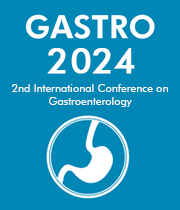Title : Spectrum of clinical presentation in patients with chronic liver disease secondary to non-alcoholic fatty liver disease
Abstract:
Introduction:
Non-Alcoholic Fatty Liver Disease (NAFLD) is the most common Chronic Liver Disease (CLD). NAFLD is recognized as an important public health problem nowadays and it encompasses a variety of liver pathologies including simple steatosis, Nonalcoholic Steatohepatitis (NASH), fibrosis, cirrhosis and finally hepatoma. The overall global incidence of NAFLD is about 46.9 cases per 1000 person-years, with 70.8 cases per 1000 person-years in men compared with 29.6 cases per 1000 person-years in women and the overall prevalence of NAFLD in Asia is now estimated to be 29.6% and in Pakistan about 15% of general population.
Aims:
To determine the spectrum of clinical presentation of patients with CLD patients secondary to NAFLD presenting in a tertiary care hospital in Karachi, Pakistan.
Methods:
It is a descriptive cross-sectional study in which all patients with CLD secondary to NAFLD were enrolled from March 2021 till date presenting in Gastroenterology Department Jinnah postgraduate medical center Karachi. After informed consent all patients were evaluated for the spectrum of presenting symptoms and the data were recorded on preformed proforma.
Results:
Total 234 patients were taken among which one hundred and thirty four patients were enrolled with the mean age of the patients 42.96 ±13.98. Males were 94 (70%) and females were 40 (30%). Mean Body mass index (BMI) were 25.84±3.50. Child Pugh Score and Meld Sodium was calculated of all patients. Risk factors were evaluated 100(74%) of patients had diabetes, 114(85%) had sedentary lifestyle, 80(60%) had dyslipidemia, 64(48%) were smokers and 67(50%) had hypertension. Most common clinical presentation was ascites 81 (60%), followed by upper gastrointestinal bleeding 50 (37%), hepatic encephalopathy 40 (30%), jaundice 31 (23%), coagulopathy 21 (16%), hepatorenal syndrome 19 (14%) and spontaneous bacterial peritonitis 11 (8%).
Conclusion:
It is concluded that ascites was the most common presenting clinical feature followed by the upper gastrointestinal bleed and hepatic encephalopathy and affecting males more than females. NAFLD is typically a chronic lifelong condition, that may get worse over time and produces debilitating outcomes. Management requires a multidisciplinary approach with clear risk stratification.
Keywords: Chronic Liver Disease, Non alcoholic fatty liver disease, Ascites, Upper GI bleeding



